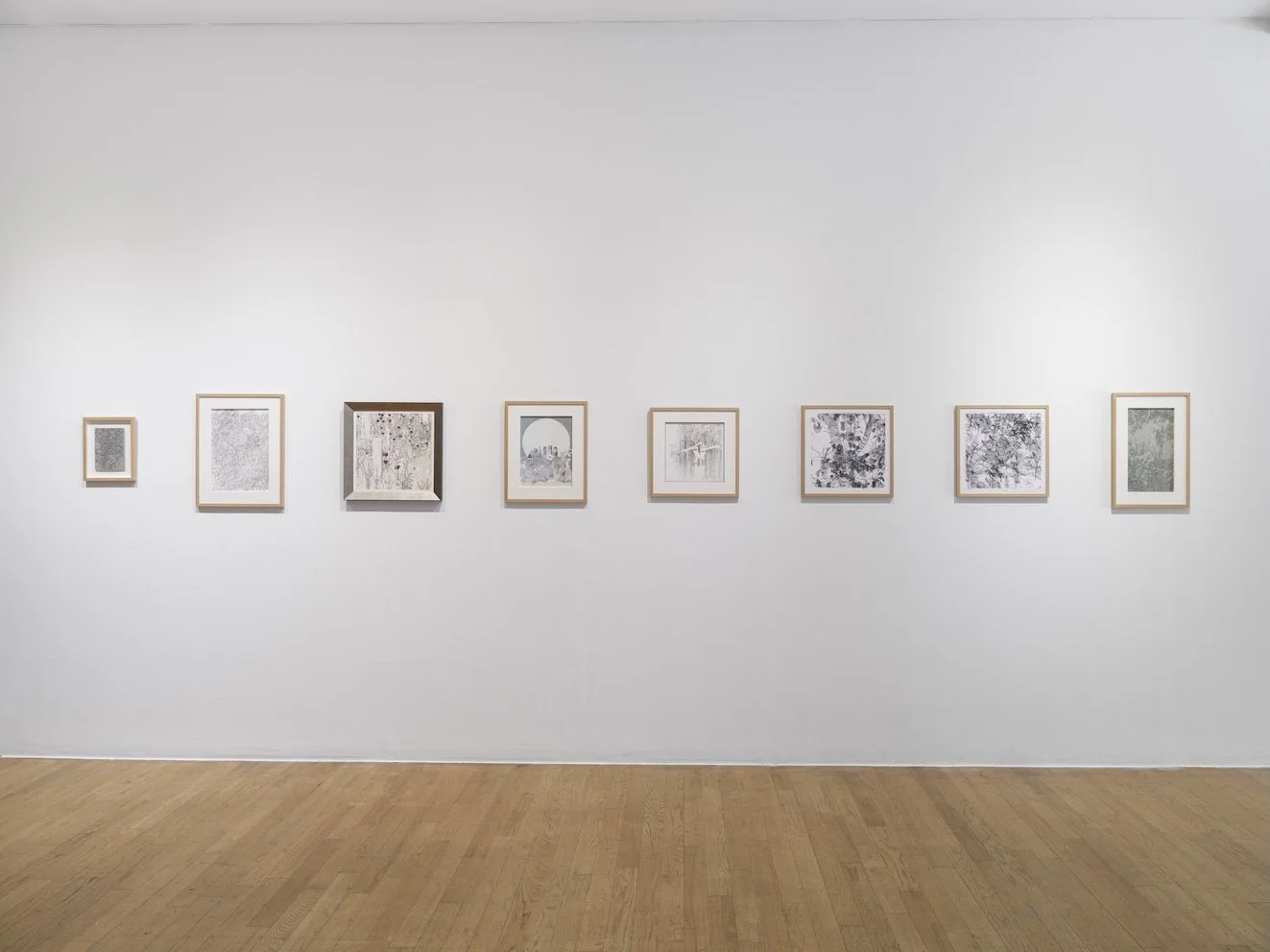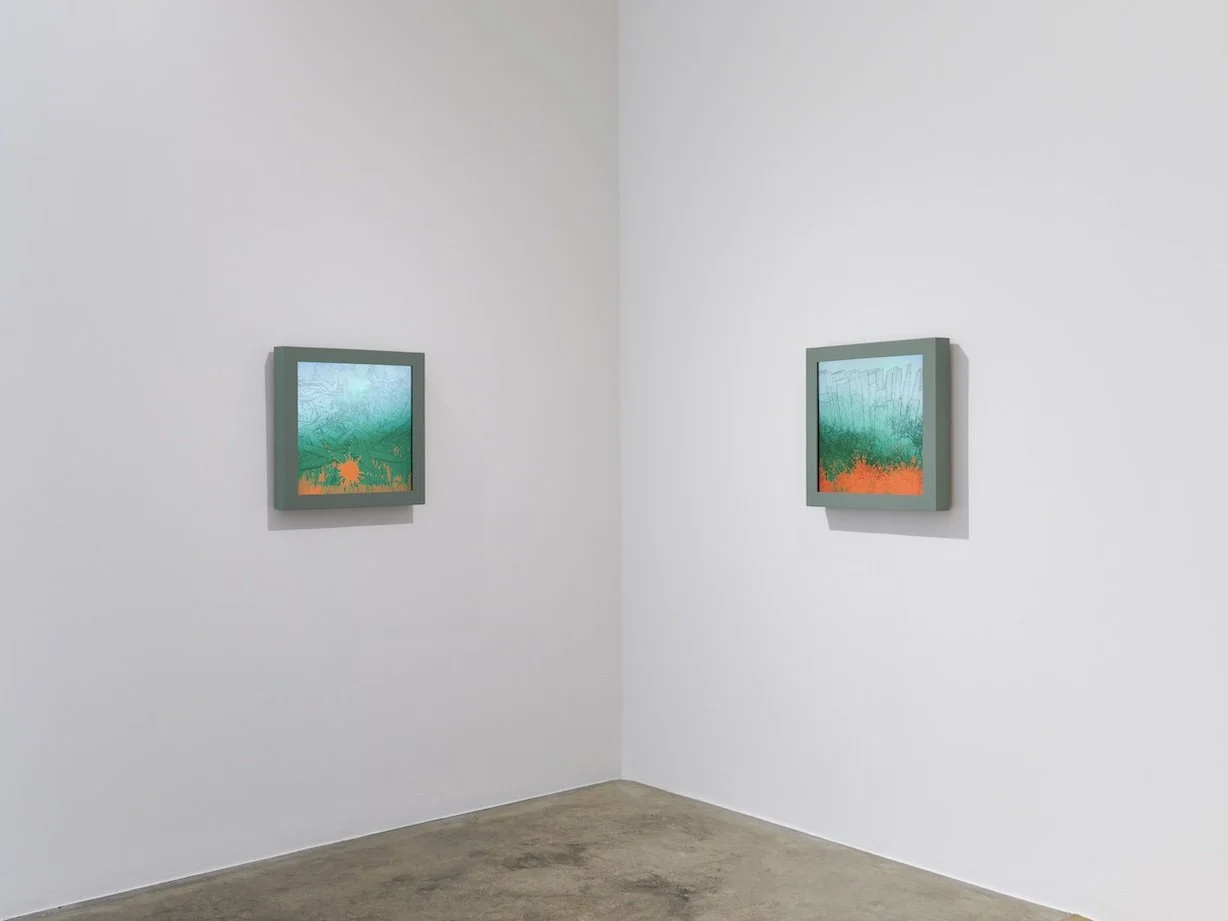HIGHLIGHTED #6 – Zancan’s ‘Tree_Line’ at bitforms gallery
As part of our HIGHLIGHTED series, Electric Chronicles continues to spotlight significant presentations of digital and generative art that engage with blockchain-based infrastructure, longform code-based processes, and new aesthetic languages.
During NFT NYC 2025, French artist Zancan opened his first solo exhibition with bitforms gallery in New York. Titled Tree_Line and running through August 2, the show brings together key works from the artist’s generative practice – spanning plotter drawings, algorithmic installations, embroidery, and hybrid physical-digital compositions. The exhibition inaugurated the Tezos Foundation and bitforms new annual partnership.
Photography by Yi Hsuan Lai
Zancan has long been recognized for weaving algorithmic complexity with a sensitivity to the rhythms and irregularities of the natural world. Trees, as both subject and structure, have formed the backbone of his generative vocabulary – serving as metaphors for recursive logic, ecological time, and the fragile balance between design and emergence. In Tree_Line, this motif unfolded across multiple scales and formats, from delicate pen or ink plots to large-scale sculptural interventions, and from interactive screens to single-thread embroidery on cotton.
As part of Tree_Line, Zancan also released a series of digital works on Objkt, extending the exhibition into online space. Four generative pieces were made available as editions of 100, offering collectors access to fragments of the show’s algorithmic language. A unique 1/1 work is yet to be released, and physical plotter pieces from the exhibition are also available.
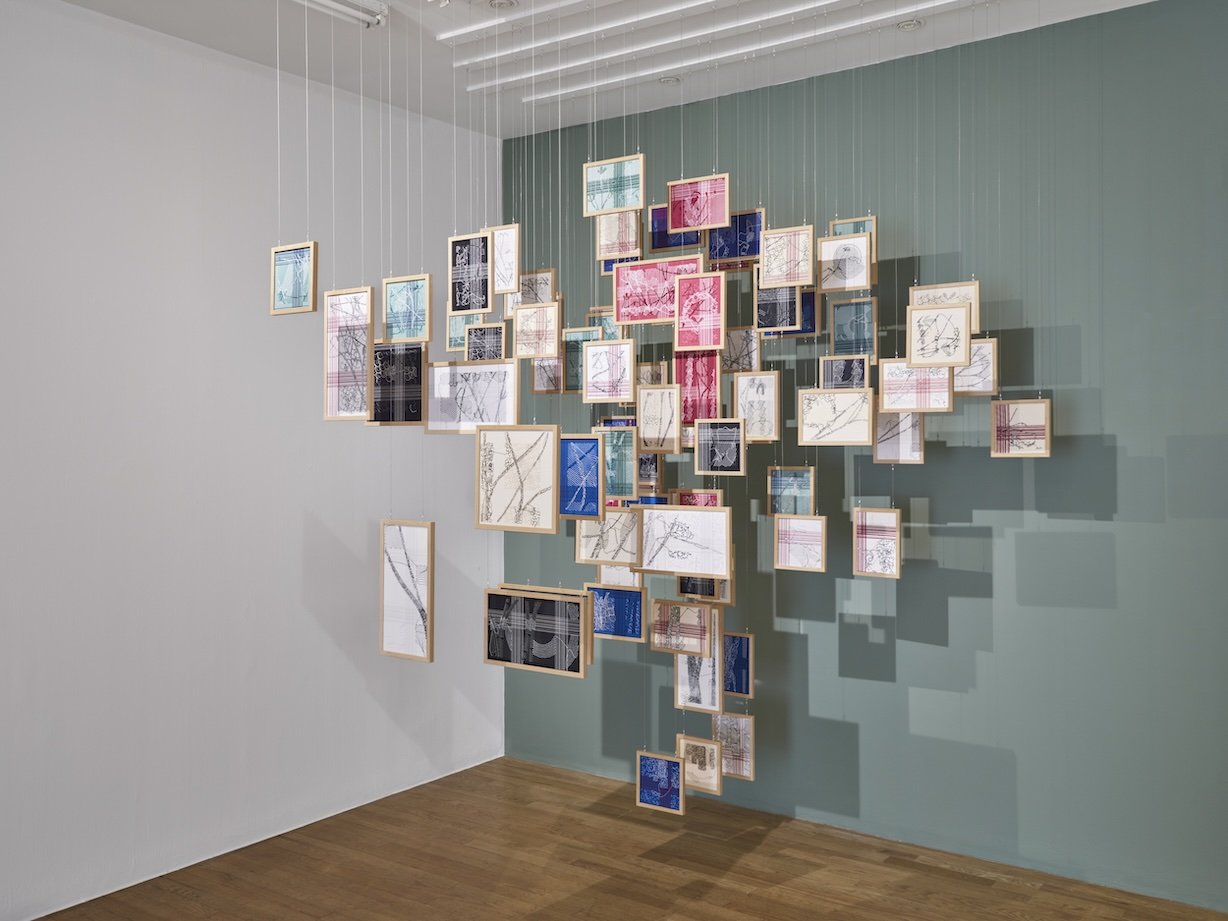
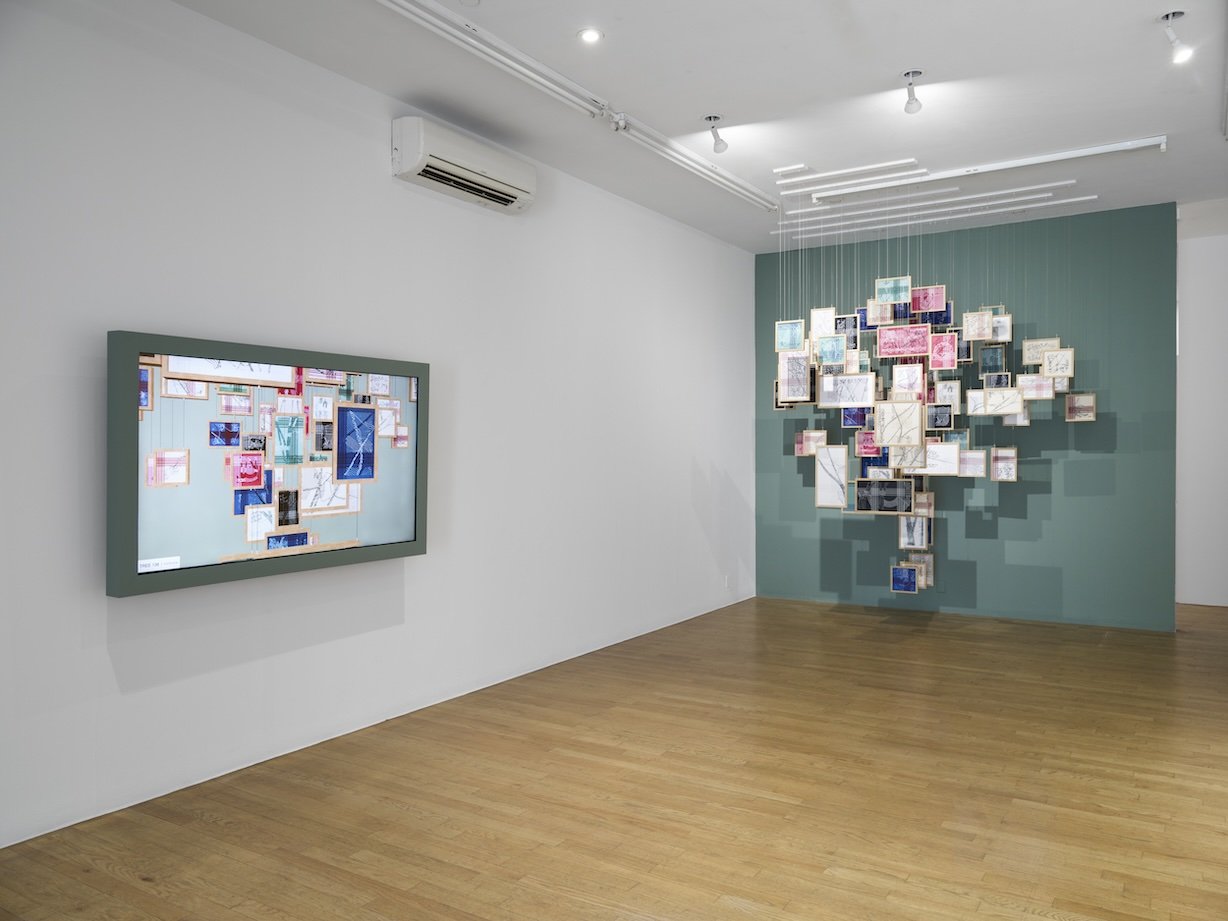
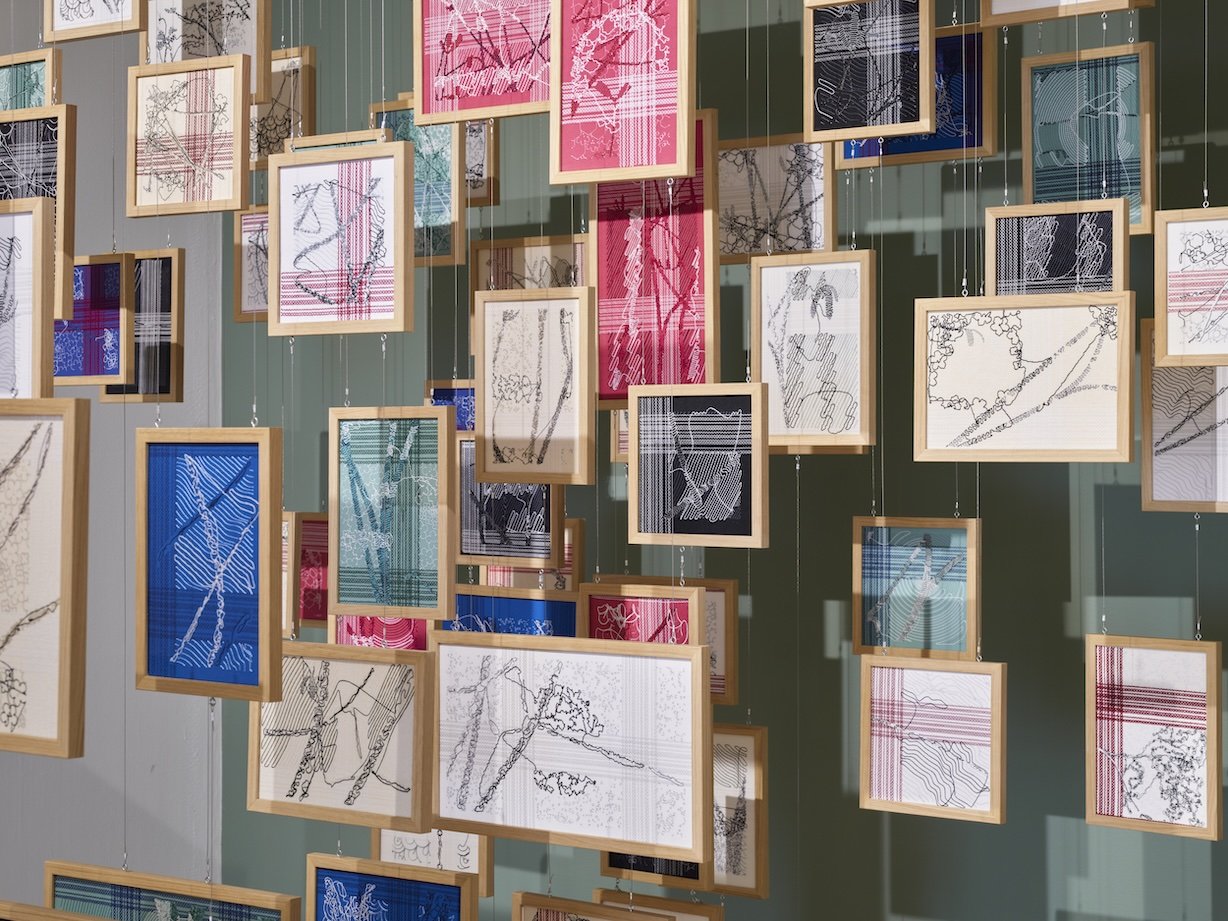
“Tree 138” by Zancan — Photography by Yi Hsuan Lai
The literal (and substantial) eye-catcher of the exhibition found its form in Tree 138. Envisioned as a complete ecosystem, the piece comprised 83 framed embroidered works that together make up the shape of a tree, carefully crafted over the course of six months in the artist’s Bordeaux studio. Arranged as a monumental wall installation, the separate works hanging on threads from the ceiling in front of a green wall, the fragments functioned as both self-contained drawings and interrelated nodes – each one encoding a segment of a broader computational logic. The result is a kind of pixelated canopy: hand-rendered, indexical, and most of all deeply material.
But Tree 138 also extended beyond the walls of the gallery. The accompanying NFT contains a fully interactive GLB file – a navigable 3D environment through which viewers can explore the work’s structural layers and algorithmic foundations. Unlike the more conventional NFTs that flatten artwork into a single-view digital object, Tree 138 was conceived as a porous system: tactile and sculptural in its physical form, open and explorable in its digital life. The work therefore gestures toward a future in which the distinction between digital ownership and spatial installation is no longer binary, but actually continuous.
Opposite the main installation, visitors encountered a chronological arc of Zancan’s practice, presented through plotted works spanning from 2021 to 2025. This timeline offered a deeper view into the artist’s evolving relationship with generative tools, particularly his use of plotter machines – a format that introduced an element of physical friction into his otherwise computational process.
Installation view, bitforms gallery, 2025 — Photography by Yi Hsuan Lai
Among the earliest works was Ivy Study, a drawing developed with the algorithm trees.js. Created at the beginning of Zancan’s daily plotting practice in 2021, the piece reflects a moment of intense material engagement with code: the algorithm functions as a kind of seed, and the plotted line becomes its visible growth. In contrast, Garden [grass.js] – a compact and richly layered A3 drawing – demonstrates how the artist spent months tuning algorithmic output toward expressive, organic form. Here, the generative becomes almost gestural: ink lines bend like blades of grass, and the machine’s mechanics disappear into a very quiet and beautiful intimacy.
Another key work – also to be found on Objkt – is A Bugged Forest #0; which confronts the idea of code not as perfect design but as a field of contingency. The piece emerged from an unintentional glitch – an unexpected behavior in the algorithmic routine that led to a surprisingly elegant form. Rather than correcting the flaw, Zancan embraced it, allowing the "bug" to become co-author. The work therefore shows how control and surrender can interplay – two forces that define much of generative practice. It also suggests that within systems of logic, there is always room for improvisation, even accident.
Zancan’s Lushtemples series, a seminal work minted on the Tezos blockchain, occupied a central place in the show. These algorithmic compositions, rendered in soft sepia tones, combined botanical forms with visual cues from ancient architecture. In these works, Zancan reflects on the dual forces of growth and decay – recognizing nature not as backdrop, but as collaborator (as he does in most of his works).
“Everything, made simple” and “A Long Thread” by Zancan — Photography by Yi Hsuan Lai
In Garden Monoliths #0, a plotted and hand-painted piece, Zancan introduces a hidden sketch on the reverse of the paper – like a ghost drawing concealed beneath ink layers. This gesture adds a layer of secrecy and emphasizes the presence of artistic labor in generative work. Meanwhile, A Long Thread and Everything, made Simple features stitched lines on fabric – linear motifs that honored the legacy of media artist and theorist Herbert W. Franke. These pieces work almost like quiet dedications: simple in form, but conceptually weighty.
Throughout the Tree_Line exhibition, the interdependence of systems is presented as something lived and crafted. Zancan’s work does not dramatize the “collision” between nature and code but approaches both as evolving structures governed by repetition, divergence, and form. Whether rendered as a tree, a line, or a digital field, each composition is rooted in a way of listening – to the algorithms, to the accidents within, and to the ‘rules’ of natural life. Zancan shows with this exhibition that he is a very careful and conceptually attuned artist working within generative systems today. His work neither glorifies technology nor mourns its encroachment, but rather tries to find a way to grow through it.
“Air_Line” and “Gaso_Line” by Zancan — Photography by Yi Hsuan Lai
The exhibition is accompanied by a dedicated digital release on the Tezos-based platform Objkt, where selected works from ‘Tree_Line’ can be explored and collected in their tokenized form. The full exhibition drop is available via the gallery’s Objkt profile, with the Tree_Line collection accessible here.

